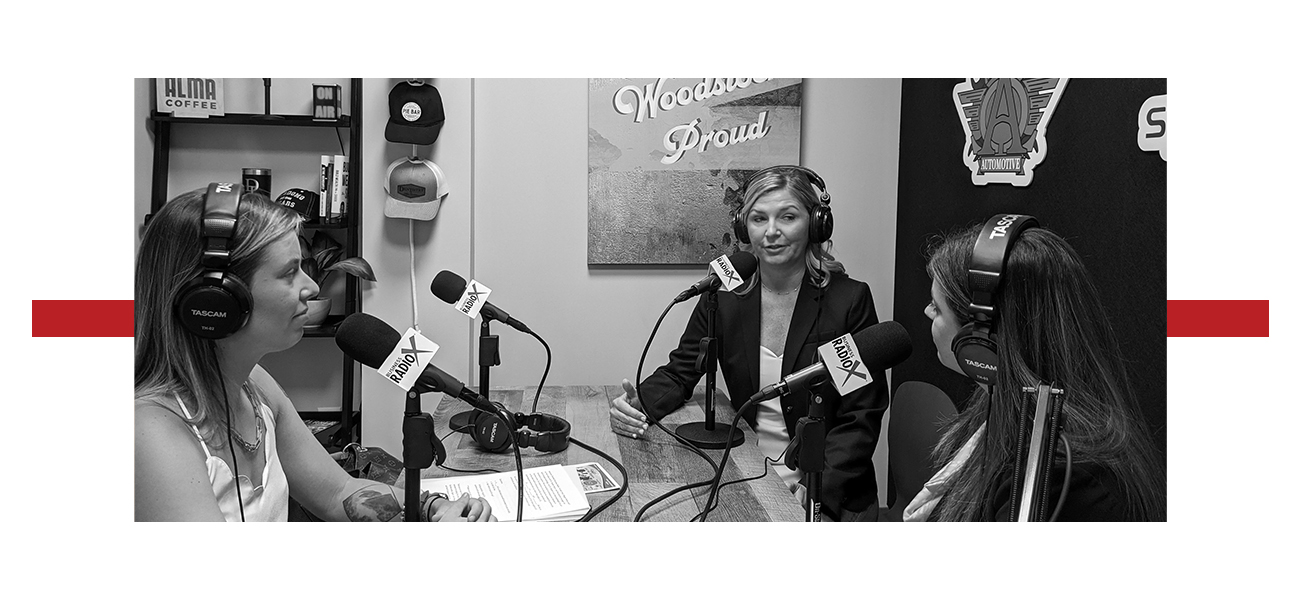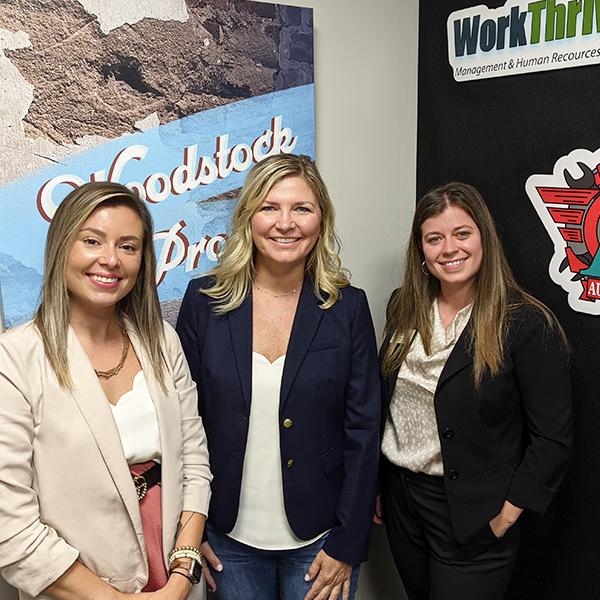
This Episode was brought to you by
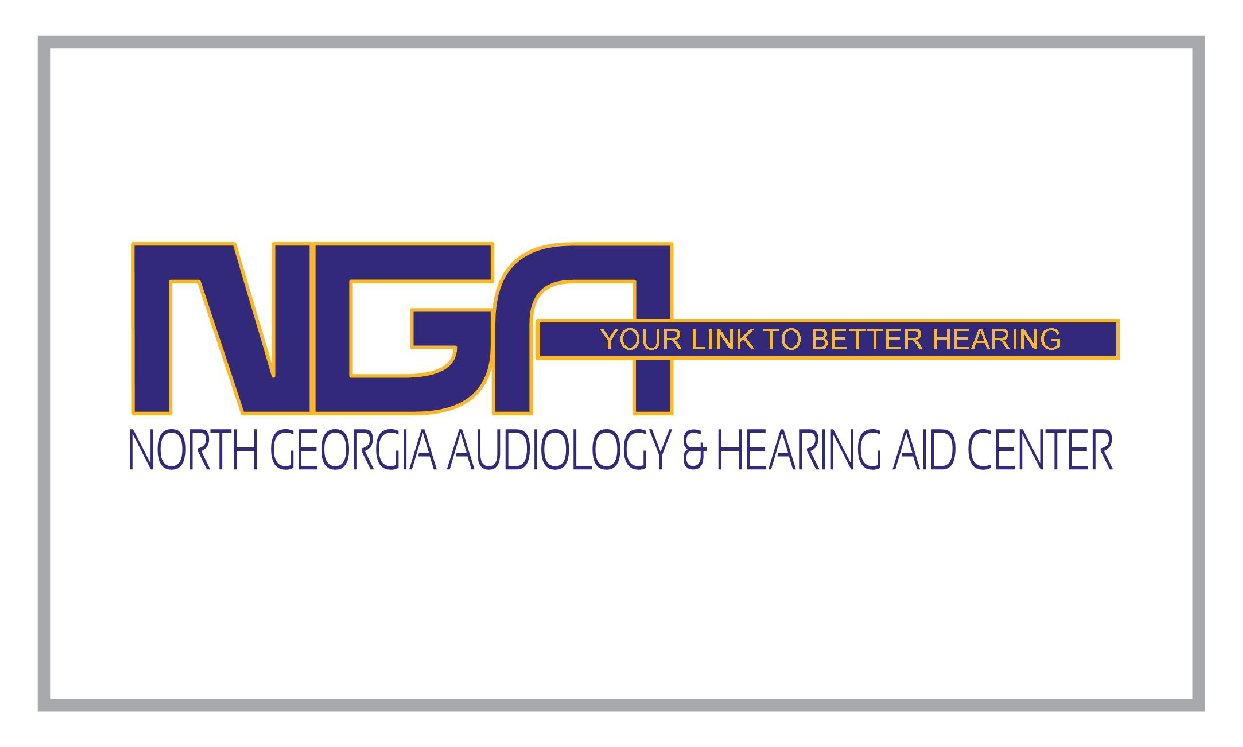
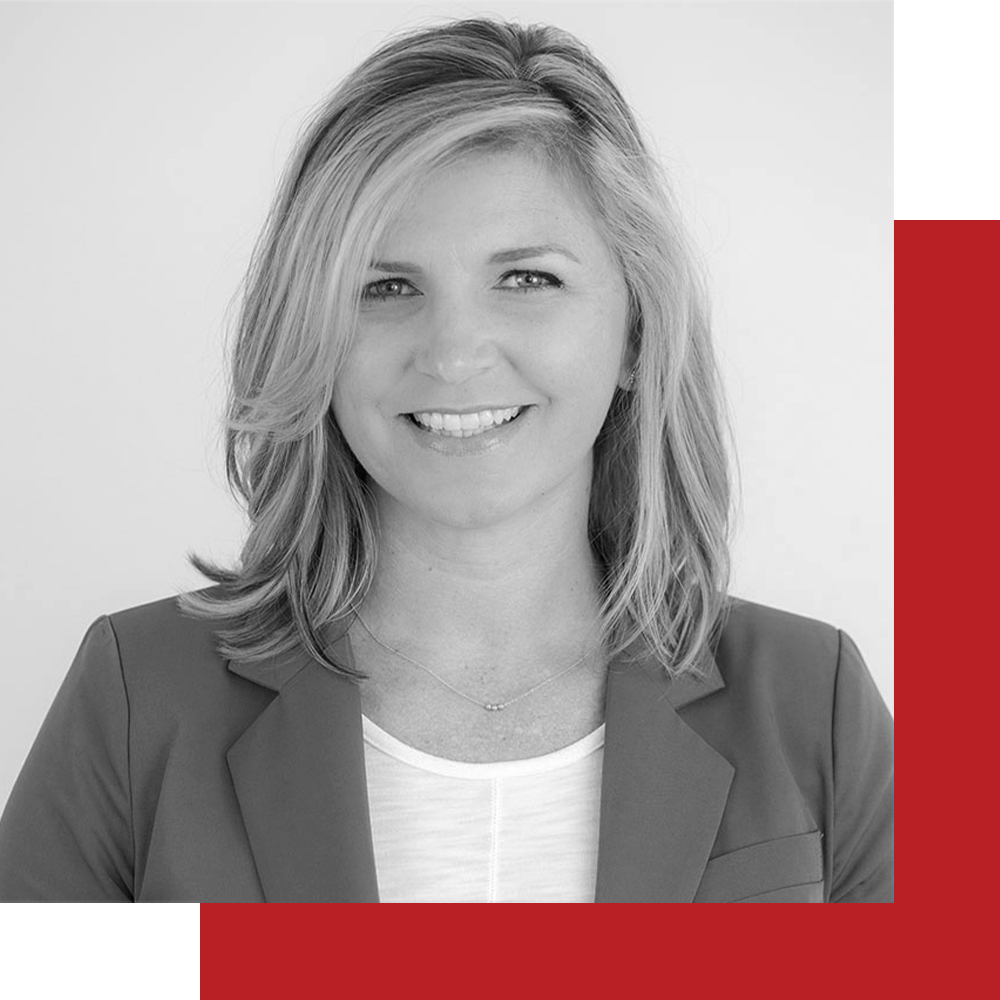 Dr. Jennifer Angerami, Chiropractor at Ridgewalk Chiropractic and Massage
Dr. Jennifer Angerami, Chiropractor at Ridgewalk Chiropractic and Massage
Dr. Jennifer Angerami is committed to helping families in the community experience improved health and vitality. She speaks regularly to local schools, businesses and organizations on health, wellness and safety topics. She enjoys educating others on how to manage stress better, how to prevent injury in the workplace and at home, and how to maintain peak performance in all facets of life. Her mission is to empower as many people as possible to experience their optimal health potential through genuine care and education.
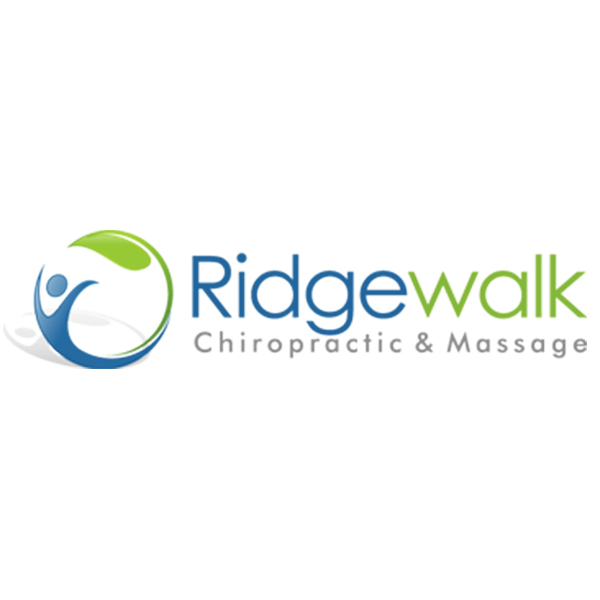 Connect with Dr. Jennifer on Facebook
Connect with Dr. Jennifer on Facebook
 This transcript is machine transcribed by Sonix
This transcript is machine transcribed by Sonix
TRANSCRIPT
Speaker1: [00:00:07] Broadcasting live from the Business RadioX studios in Woodstock, Georgia. Welcome to Women in Business, where we celebrate influential women making a difference in our community. Now here’s your host.
Speaker2: [00:00:28] Welcome to Cherokee Business Radio, I’m your host, Megan Porter, and I’m here today with Dr. Haydon None and the practice manager for North Georgia Audiology. And Dr. Hayden is our lead audiologist for our Woodstock location. We are excited to introduce our Women in Business series. So our objective is to educate our wonderful community on the allied health professions and the very talented and knowledgeable women who run them. Here today is Dr. Dinn. Dr. Jen is a chiropractor with Ridgeback Chiropractic, and she has so kindly volunteered her time to share with you all of our many aspects of her career and how she is helping to make a difference in our community and health care. Doctor Dean, tell us a little bit about yourself and what it is you do daily.
Speaker3: [00:01:10] Good morning. Dr. John is my name and my last name is Andrew Ramey, which is why I go by Dr. Jen. And like Megan said, I am a chiropractor at Ridgemont Chiropractic here locally in Woodstock, and I’ve been serving my community for almost 20 years now. So that’s pretty that’s amazing. Pretty amazing. Yeah. And I see lots of patients. We’re a family practice. So we have patients of all ages, including infants, children, adults and adults that like to stay active in their later years. So we take care of everybody that wants to be healthy and improve their health in lots of ways.
Speaker2: [00:01:51] Awesome. So what made you get into chiropractic work?
Speaker3: [00:01:54] Yeah, I have been raised by a chiropractor. So my dad is a chiropractor. He practices is still in New Jersey. He’s about to retire. So growing up, he was in chiropractic school. And so there were always books around. And I just knew that I wanted to be a chiropractor. Like from a very young age. So I went to University of Iowa for my undergrad studies and moved here from Illinois in 1998 and went to life university for grad school for chiropractic. So, yeah, that’s awesome.
Speaker4: [00:02:26] So fill us in a little bit on what chiropractic work is. Do you say chiropractic or chiropractic? This is the question.
Speaker3: [00:02:34] It is referred to as chiropractic. Right. The technique or the art of adjusting. So chiropractic is a science and art and a philosophy. And basically, the the method is when we look at the spine, we look to the spine to try to remove any interference that might be causing pain symptoms, all of that. So what we do is gently adjust the spine by removing subluxation and a subluxation as when a bone or a vertebrae misaligned in the spine and actually causes irritation to the nervous system, reducing function of the body. So if we remove that interference by adjusting the spine, then the body can heal itself and function better.
Speaker4: [00:03:19] That’s really cool. So how long do you have to go to school to do something like that?
Speaker3: [00:03:23] About eight years. So it’s like a little bit less than eight years. You don’t technically have to have a full undergrad degree to get into chiropractic school, but it’s it’s the equivalent of of that.
Speaker4: [00:03:36] That’s really cool. I know that I didn’t know that you could have infants and children doing chiropractic work because, you know, I’m I’m an audiology. So the whole chiropractic side of things I’m not that familiar with. So I’m very excited to have you here today and kind of learn more about what you do. So tell us a little bit about your techniques with infants and children. That’s interesting to me.
Speaker3: [00:03:57] Yeah, it’s very gentle. The way that we adjust an infant or a young child is very different from the way that I would adjust you or an adult. So technique wise, really what we do is palpate or feel the spine and notice any imbalances, mostly muscle tension and stress. So, for example, I have a lot of parents that bring children in for ear infections. So, yeah, very common problem for for young ones. And so oftentimes we’ll find that there’s an irritation or a misalignment of the spine in the upper cervical area, especially C1 or C to the first two vertebrae in the neck. And just adjusting that very gently, which it would be basically the weight of a dime, if you imagine that that amount of pressure can cause irritation to the nervous system. And so gently, just palpating and feeling and, you know, applying a small, gentle force to the spine allows the body to align itself. And that’s pretty miraculous watching kids get adjusted.
Speaker4: [00:05:02] I was about to say. So they’ll come in to see me and they’ll cry while I do the tests and hope you have an ear infection. Listen to the doctors. And that’s all.
Speaker3: [00:05:08] Exactly. Yeah. So it’s great because they respond very quickly. Kids and infants especially. But they haven’t had the amount of years of stress and tension on their spine. Right. So they usually respond within a couple of visits. They’re very squishy. They are. They are. And those bones aren’t fully formed. Right. So they’re most. We like cartilage, and so it doesn’t take a lot to really make a big difference.
Speaker4: [00:05:32] It’s pretty cool. So what would you say would be your most challenging patient to work with in terms of adults and things like that?
Speaker3: [00:05:40] Excellent question. So having been in practice 20 years, you know, I always thought when I was younger, young in practice, that the big, heavy people would be so challenging to adjust, like how am I going to adjust this big muscular guy? Usually they’re actually a little bit easier. It’s usually very petite, younger females that are so flexible. I’m trying to tell me you’re looking at Megan.
Speaker2: [00:06:06] I mean, I went through the whole practices with Dr. Jenn, including the x rays and everything, and she did adjust me. So I’m like, okay, cool. That is totally me she’s talking to. Yeah.
Speaker3: [00:06:16] Yeah. It’s challenging when there is hyper mobility in the spine or there’s increased flexibility or just when it’s difficult to get a patient to like joint tension. Those are the most difficult patients. And I would say, you know, as far as symptoms, acute low back patients are usually very challenging. So when we have somebody that has sciatic pain or, you know, just years of lower back pain, it’s it’s challenging to basically get them out of the bad habits that cause that, because in our profession, we kind of say now that sitting is the new smoking. And most of us are sitting for long periods of time now. And so embracing those bad habits is really challenging for patients to, like, get a full recovery.
Speaker4: [00:07:03] So how would you tell a patient, OK, let’s try not to sit so much, what would be your advice or something like that?
Speaker3: [00:07:09] So it’s amazing that now we have varied tasks which allow patients to work. Even if they’re working from home, they can actually stand for periods of time. Right. So that has been an an amazing addition, I would say, to home office life and even, you know, office life for patients. So really just being able to take breaks from sitting too long. So I really try to remind patients every 30 minutes they need to either change their position, which could mean just pushing back from their desk and flexing forward to touch their toes and kind of get those muscles to loosen up a little bit, get the blood flowing, just change their position. And posture has like such a huge impact on that. Right. So if we’re sitting, it’s causing stress on the spine. It actually puts three times the amount of weight on our desks in our low back when we’re sitting versus when we’re standing, because we know that support from our lower body. So it is yeah, that can be challenging, but
Speaker4: [00:08:06] That’s really good advice. You know, just yesterday, I was I was in an appointment with one of my patients and I was sitting there and I was the and I was like, man, my back is starting to really hurt. And you’re right, you do forget to move if you have an office job or even now with the world the way that it is. You know, a lot of people are working from home. So I think that’s really good advice that you would forget to do a lot of the times, right? Yeah, that’s awesome.
Speaker3: [00:08:30] I’m also impressed with a lot of companies are just more willing to provide that ergonomic workspace for their patient or for their really great employees. Absolutely. So whether they’re at home, I see a lot of those people having their home offices remodeled, which makes a huge difference over time. Nice.
Speaker4: [00:08:49] Yeah. OK, I’ve got a I’ve got a fornier question. I guess are not funny. But, you know, I know with my field there’s a lot of stigma that goes along with hearing aids and things like that. And there’s got to be stigma with your field as well. So like for sure, I was about to say for people who are kind of on the fence or a little bit nervous about going to get chiropractic work done, what would be some advice that you would give them? Because I see a lot of patients that are that are scared to go to see you.
Speaker3: [00:09:17] Sure. Well, first of all, I’ll tell you, you know, there are a lot of different techniques for adjusting the spine. I know I would say a lot of people that I deal with as as new patients might tell me that they have been afraid to have their neck popped or to hear that popping. When I hear a lot for sure, I hear that all the time. And being being raised by a chiropractor and being adjusted my whole life, I’m very relaxed and calm about the whole situation because I know what to expect. And so there’s obviously that element of fear when you don’t know what to expect. And really just removing that fear for patients and and explaining to them that it’s a very gentle process. It really is the popping sound. I think removing that idea for patients is just it’s not the bones cracking. It’s actually just gas being released from the joint capsule. So we have a small amount of gas in our joints. And when we release that tension on the joint, things move more freely. But it releases that. And that’s really all you’re hearing. You’re not hearing the bones crack. So usually that eliminates the fear for patients.
Speaker4: [00:10:23] That’s a really good it good to know, because I don’t think a lot of people realize that. Yeah. Yeah, thanks for that. OK, let’s see in my field, I deal with a lot of people who have had spinal trauma. They’ve had you know, they’ve hit their head and had some head injuries. And then sometimes I deal with people who, as a result of that, or maybe not even as a result of that, they have tinnitus or what we call ringing in the ears. And I have I’ve heard and I’ve seen a few people that have followed up with chiropractors for ringing in the ears and to kind of alleviate some of those symptoms. Have you come across any patients in your field that deal with that? And if so, how would you treat somebody like that?
Speaker3: [00:11:07] Yeah, absolutely. We do see patients with tinnitus or tinnitus, tinnitus. However, we can find out that is. Yeah.
Speaker2: [00:11:16] Yeah. Tomato. Tomato.
Speaker3: [00:11:17] Yes, exactly. Exactly. So and it’s funny. Most of my patients that I am adjusting, you know, usually will have something in their neck related to like some type of previous trauma, or it could just be years and years of of stress and tension on the spine
Speaker4: [00:11:33] Or bad posture
Speaker3: [00:11:35] Has bad posture.
Speaker2: [00:11:36] Sure.
Speaker3: [00:11:37] Sure. I know getting more on the radio right now and can see exactly where I like. So, yeah, noticing any stress or tension in that upper cervical area is usually when I see patients that have experienced that symptom in the past. But usually they’ll tell me after the fact, it’s kind of funny. They’ll say, you know, Doctor John, I never thought to tell you that I had ringing in the ears. And now that I’ve been adjusted and I’m my neck is feeling better, my neck pain is gone, but also I have less ringing in the ears or that symptom has gone. So it’s funny. It’s usually kind of on the back end of things that patients will kind of volunteer that information because they don’t really think of chiropractic care when they think of their ears specifically by even ringing in the ears. And I will say I notice a lot of jaw pain and or dysfunction of the jaw that relates to tinnitus. So, you know, usually that can come from some type of trauma. Most of us have been in some type of minor car accident. Some of us have been in major accidents. And a lot of that can, you know, impact the cervical spine, but also the jaw. And so when that jaw is misaligned, it really does impact that ear canal. And this creates some of that tension.
Speaker4: [00:12:55] And I can second that, too. You know, I see I see a lot of patients who have the ringing in the ears as well. And, you know, while we have a different approach to kind of treat and manage that tinnitus, I do think it’s good to have people like you in our back pocket that say, OK, you know, you’re telling me you’ve got TMJ, you’ve got GI issues, you’ve got neck problems. So let’s look and let’s look and see what your ears are doing functionally. But if that doesn’t work, then we’ve got Dr. Jin in our back corner, which is nice.
Speaker3: [00:13:22] Absolutely. Well, and vice versa. Obviously, if I’m not seeing results for the patient, I’m happy to refer out and grateful to send them to you as well.
Speaker4: [00:13:31] Yeah, I like to call this an interdisciplinary approach. You know, we like to keep our patients health care at the center. So, you know, if there’s somebody that I know that can help them, great. Why not, you know?
Speaker3: [00:13:42] Absolutely.
Speaker4: [00:13:43] And it’s you know, it’s crazy. I do see a lot of people with that TMJ, you know, and it didn’t really put two and two together before, but I will definitely start to think about that more moving forward. Yeah.
Speaker3: [00:13:53] And adjusting the jaw is is also very gentle and specific. But we have instruments that we can use that are mostly working on the muscles to like help align the jaw itself when we do have the joint actually out of alignment. Oftentimes there’s a physical adjustment for that manual adjustment, I’ll say. But yeah, it’s it’s a pretty easy process.
Speaker4: [00:14:13] So for all you listening, tinnitus is not hopeless. There is hope. You know, one of the things I see when they come into my practices, you know, I went to see this doctor, I went to see that doctor, and everybody told me that, you know, I just have to live with this. So there is good news out there that you don’t have to live with that. So I
Speaker3: [00:14:32] Say, yeah,
Speaker4: [00:14:33] Ok, let’s see. What’s your favorite part about your job?
Speaker3: [00:14:38] Definitely. By far. My favorite part is being able to help patients and, you know, especially patients that have maybe been suffering for years and really had nowhere else to turn and didn’t really necessarily take chiropractic as their first approach for whether it’s pain or just some type of disease or dysfunction. So really seeing that process of them being able to return to their daily life and get their health back and regain just their their ability to be happy and just allowing, you know, their body to do that is really amazing to witness how powerful the body is and like how just removing some stress and tension really allows the baby or the baby, the body babies, too, but the body to function the way that it should. So, you know, getting patients back out there enjoying life is really something that motivates me and is is my favorite part about what I do.
Speaker2: [00:15:36] Awesome. Well, I’ve known Dr. Jenn for three or four years now, and she’s probably the most compassionate chiropractor I’ve ever met because she is so compassionate about her patients. She does have a passion for helping people. So my next question for you is, what is your best referral source?
Speaker3: [00:15:54] Thank you for that. By the way, Megan, I appreciate that. My best referral source, you know, I’m grateful to have been in practice as long as I have. Most of my patients come from referrals from other patients. So it’s really just. After your experience in my office, you know, explaining that to other patients and potential patients about your experience in the office and just sharing that knowledge and, you know, removing those barriers for patients to consider coming into the office that might have, you know, reservations or. Not they’re just not sure about what to expect when they come to a chiropractor, so, you know, any any patient that just has a conversation and is willing to tell a patient about their experience, I think is really the best. Just word of mouth advertising by far goes the longest way. Right. When we experience something good and we share that with others, I think that’s that’s just awesome.
Speaker4: [00:16:50] We have a saying at our office that the best compliment you can give is to refer our friend.
Speaker3: [00:16:54] Absolutely.
Speaker4: [00:16:55] I would agree with that.
Speaker2: [00:16:57] Yeah. Coming from me, I’ve gone through the process with Dr. Jenn and it’s very, very laid back. And you don’t feel stress, which is amazing. I was about
Speaker4: [00:17:05] To say she’s got a good bedside
Speaker2: [00:17:07] Manner. Definitely. And I’ve told everyone in the office, oh, you need your back adjusted. Go to Dr. Jenn. She’s amazing. So with Ridgeback Chiropractic, how would someone get in contact with you to schedule an appointment? Yeah.
Speaker3: [00:17:21] So there are a couple of ways you can go online to our website, which is Bridgework Kairo dot com. And you know, we can also just accept phone calls, obviously, to schedule those those appointments. So our front desk staff is amazing and they are very accommodating. We have ours Monday through Friday. And so there’s always going to be, you know, a time where we’re there after hours as well. So there’s going to be a time that we can get you to to see you. But it’s usually about 45 minutes for the first appointment. Like you mentioned, you had X-rays when you came into the office. That is something that we do. We also have like a full physical therapy suite. So if we need to do any muscle stem or ultrasound or different additional therapy is in the office, we can do all of that as well. And that can change based on a visit to visit basis. Right. So a typical visit, once you’ve become like an active patient, we’ve already started you up, is usually about 30 minutes. So and again, it kind of just depends on what you have going on that day.
Speaker2: [00:18:22] So, yeah, and I know you gave some advice earlier in this podcast, but to leave the best bit of advice at the end of this podcast, what would you say for your future patients?
Speaker3: [00:18:35] The best advice is you have to be your own advocate for your own health. Right. You have to listen to your body and really trust that that you know best. And, you know, we got all kind of have that doctor within within us, so to speak. And so if you trust and know that what you’re experiencing needs further attention, then, you know, don’t ignore those symptoms, your symptoms or your body’s way of trying to tell you there’s something that’s wrong.
Speaker4: [00:19:05] You only have one body, right?
Speaker3: [00:19:06] That’s exactly right. And one spine. Yeah. Yeah. We got to take really good care of it. So, you know, it comes from staying active and exercising, obviously eating right. It all plays a role as far as our overall health. But, you know, from a physical standpoint, just really being in tune with your body and being willing to do those things that it’s going to take to actually get better.
Speaker2: [00:19:29] As Joseph Palladio said, you’re as young as your spine is flexible. That’s right. Yeah, that’s what I tell my husband all the time.
Speaker3: [00:19:36] Yes, absolutely.
Speaker2: [00:19:38] Lovelady’s awesome. OK, well, I believe this is about the end of our podcast.
Speaker4: [00:19:43] Do you have any questions for us before we go, or is there anything else that we haven’t talked to you about that you would like to to get out to the world and Woodstock?
Speaker3: [00:19:53] Oh, I think we’ve really covered everything. And I really just want to thank you for having me on. It was a pleasure. And this is my first radio experience live. So this is so much fun and it’s fun. Yeah, I really appreciate you having me.
Speaker4: [00:20:05] We’re so glad that you came. And like we said, we just wanted to kind of share you and the amazing things that you’re doing to help the community and and to help people lead a better life. So we appreciate all of the expertize. I definitely learned a lot as an audiologist. I don’t know a whole lot about the other allied health professions. So I’m glad that you’re here. And I hope that other people have taken away from this what I have. So thank you for coming.
Speaker3: [00:20:31] Thank you so much. I appreciate
Speaker2: [00:20:32] It. And again, to piggyback off hate in, I want to just thank you so much. We have been so excited for this podcast for the last week since we met you for lunch. And Dr. Jen, and just thank you for everyone for taking the time out of your day to listen to our Women and Business series. I am Megan Porter and this is Doctor Hayden then with North Georgia Audiology, and until next time, have the very best day.
